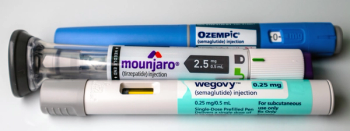
Tip of the Week: Establishing New Services in Niche Areas
This week’s pharmacy management Tip of the Week takes a look at establishing a clinical pharmacy site in the emergency department (ED) of a hospital.
Services can be developed organization-wide or in particular areas within the organization. This week’s pharmacy management Tip of the Week takes a look at establishing a clinical pharmacy site in the emergency department (ED) of a hospital. In doing so, attention is called to various components of management, including basic functions of management, business planning, and implementing value-added pharmacy services.
In the American Journal of Emergency Medicine, authors present various facets before (planning) and just after implementation of services in an ED.1 They describe the need for ED pharmacists, including ED use of time-sensitive and high-risk medications to vulnerable patients.
ED pharmacists have been shown to help reduce readmission rates and medical errors, so the prospective ED pharmacist should come prepared with this evidence in their business plan to show how much money can be saved. That plan would also include support for ED pharmacists documented by groups outside of pharmacy, such as the American College of Emergency Physicians (ACEP).
The authors review the services potentially provided by ED pharmacists, such as ED resuscitation team participation, pharmacotherapy consultation, ADE reporting, toxicology recommendations, ED personnel in-service education, clinical research, assistance with grant application preparation, scholarly publications, and formulary management. The authors then review a few studies documenting the benefit of having an ED pharmacist, including increases in vaccinations, reduction in return ED visits among patients, improved antimicrobial stewardship, increase of patients receiving guideline-adherent treatment in various diseases, and reduction in catheterization lab time.
The evidence presented also includes financial analyses of ED pharmacist implementation. They describe barriers, such as the challenge of acquiring necessary buy-in, high start-up costs, inadequate definition of the roles of the ED pharmacist, and inadequate planning for adjusting the workflow of the ED as well as perhaps the entire pharmacy department.
Incorporating a new clinical pharmacist position requires considerable planning, evidence, and other management skills such as time management, financial forecasting, acquiring the proper evidence, demonstrating value, and melding clinical applications and knowledge with solid leadership. This example describes service in an ED; however, the main premises hold true for any other niche setting, even while the specific detail may change.
Establishment of a service requires detailed business planning, consultation of the literature, support or evidence from professional organizations, legal and ethical requirements, and consideration of challenges, costs, and benefits to determine return-on-investment. This kind of preparation will likely breed success.
Additional information about management functions, business planning for pharmacy Programs, and implementing value-added pharmacy services can be found in Pharmacy Management: Essentials for All Practice Settings, 5e.
Shane P. Desselle, RPh, PhD, FAPhA, Professor of Social/Behavioral Pharmacy at Touro University California.
REFERENCES
Morgan SR, Acquisto NA, Coralic Z, et al. Clinical pharmacy services in the emergency department. Am J Emerg Med. 2018;36:1727-1732.
Newsletter
Stay informed on drug updates, treatment guidelines, and pharmacy practice trends—subscribe to Pharmacy Times for weekly clinical insights.

















































































































































































































